There are many different types of putty and wood filler available on the market, so it is important to find the right one for your project.
There are a few different ways to fill a drilled hole in wood. The method depends on the hole size, type of wood, and what you use to fill it. This blog post will discuss different methods on how to fill a drilled hole in wood. We will discuss when each method is best.
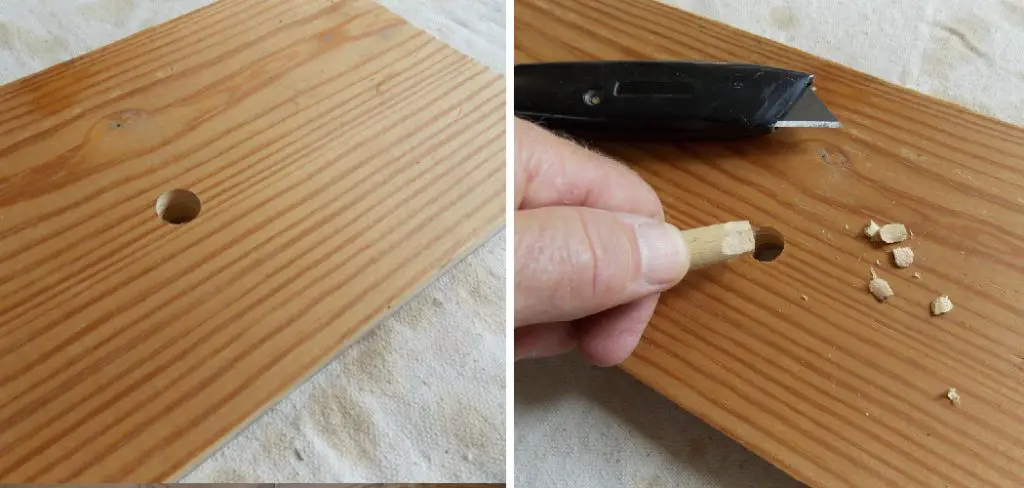
Summary: There’s nothing quite as frustrating as a drilled hole in wood. Luckily, there are several ways to fill the hole without having to replace the entire piece of wood. Here are a few tips:
– Use a patch kit or glue to seal the hole. This will prevent water and other debris from getting inside and damaging the wood.
– Apply a clear sealer to the surrounding area to help protect the wood from future damage.
– Use a wooden dowel to prop up the hole and create a seal. This will keep the area dry and prevent debris from entering the hole.
11 Different Methods on How to Fill a Drilled Hole in Wood
You can try these effective methods to fill a drilled hole in wood.
Method 1: Use Wood Filler
Wood filler is the easiest way to fill a drilled hole in wood. All you need to do is apply the wood filler into the hole and allow it to dry. Once it’s dry, you can sand it down, so it’s flush with the rest of the wood. The benefits of using wood filler are that it’s easy to use and it dries quickly.
Method 2: Use Epoxy
You can use epoxy to fill your drilled hole if you want a stronger bond. Epoxy is ideal for filling holes in wood because it creates a strong, lasting bond. First, mix the epoxy according to the instructions and apply it to the hole. Before it gets dry, insert the dowel into the hole. Once it dries, you can sand it down, so it’s flush with the wood. This is very easy to do and only takes a few minutes.
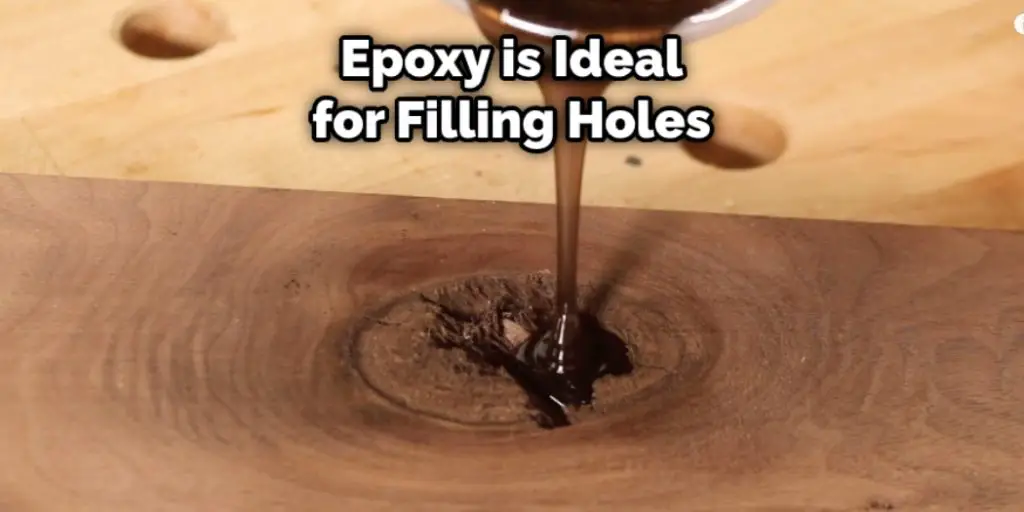
Method 3: Use a Wooden Dowel
Another way to fill a drilled hole in wood is using a wooden dowel. All you need to do is insert the dowel into the hole and then glue it. You can use wood glue or a strong adhesive to ensure the dowel stays in place. Once the glue has dried, you can sand down the area to flush it with the rest of the wood.
This method is best for small holes that don’t need to hold a lot of weight. However, if you’re looking to fill a large hole or one that will be under a lot of stress, you’ll need to use a different method.
You Can Check It Out To Cut Thick Wood With Circular Saw
Method 4: Use a Metal Dowel
If you’re looking for a stronger option, you can use a metal dowel to fill your drilled hole. This is best for larger holes or holes under a lot of stress. To use a metal dowel, simply insert it into the hole and weld it. After getting cooled, the dowel will be solid and sturdy. Ensure every safety precaution is taken when welding.
Method 5: Use a Wooden Plug
Another option for filling a drilled hole in wood is a wooden plug. This is best for small holes that don’t need to hold a lot of weight. To use a wooden plug, simply insert it into the hole and tap it into place with a hammer.
If the hole is too big, you can first insert a dowel rod into the hole and then add the wooden plug on top of that. Either way, once the plug is in place, you can trim it off, so it’s level with the surface of the wood. Finally, you can sand the area smoothly.
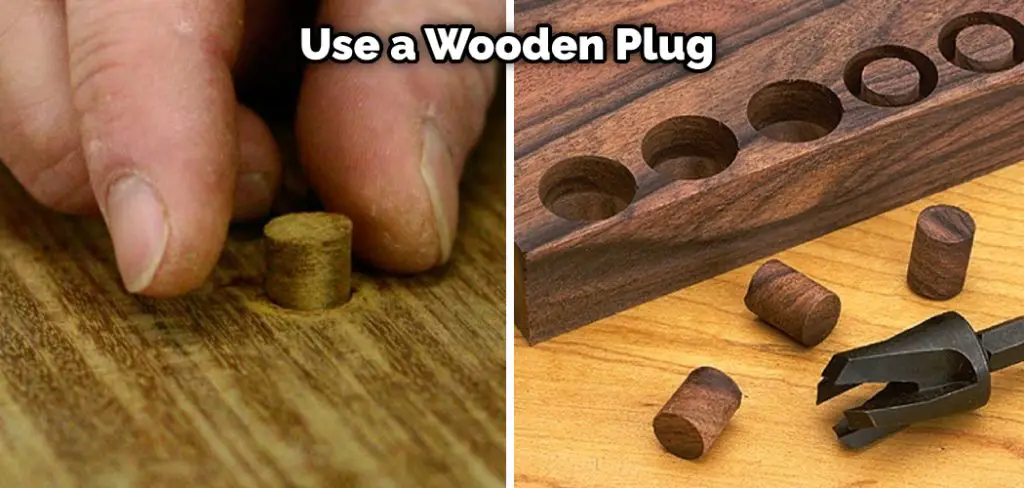
Method 6: Use a Cork Plug
You can use a cork plug if you’re looking for an alternative to a wooden plug. Cork plugs are best for small holes that don’t need to hold much weight. If you want to use a cork plug, start drilling a pilot hole slightly smaller than the cork plug. Then, insert the cork plug into the hole and tap it in with a hammer. Once the cork plug is in place, you can trim it flush with the surface of the wood using a sharp knife.
Method 7: Use a Rubber Plug
If you need to fill a hole under a lot of stress, you’ll need to use a rubber plug. Rubber plugs are best for large holes or holes holding a lot of weight. To use a rubber plug, start by drilling a pilot hole that’s slightly smaller than the rubber plug. Then, insert the plug into the hole and tap it with a hammer. Once the plug is in place, use a putty knife to smooth it out, so it’s level with the surrounding wood.
Method 8: Use Putty
Another way to fill a drilled hole in wood is by using putty. Putty is best for small holes, and it’s easy to use. First, you need to knead the putty until it’s pliable. Then, press the putty into the hole and smooth it with your fingers. Let the putty dry for at least an hour before sanding it down. Finally, paint or stain the wood to match the rest of the piece.
If you have a large hole to fill, putty may not be the best option. In this case, you can try one of the other methods listed in this article.
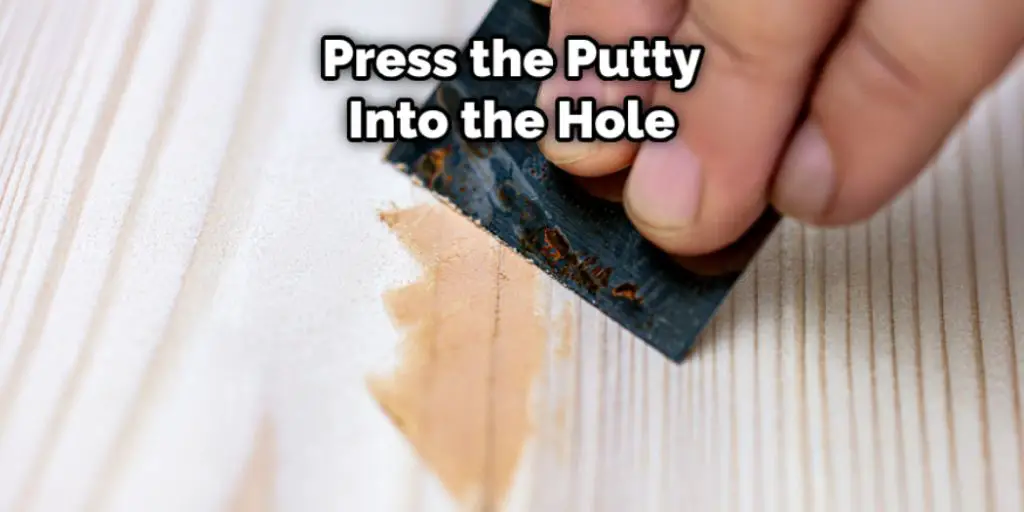
Method 9: Use Shavings
If you want to fill a small hole in wood, you can use shavings. This is a quick and easy way to fill a small hole. Simply put the shavings into the hole and tap them down with a hammer. Once the shavings are in place, you can sand the area smoothly. While doing that, you can also apply wood glue to ensure that the shavings will not fall out easily.
Method 10: Use a Wooden Button
Wooden buttons are great when you have a very small hole to fill. Simply glue the button in place and allow it to dry. You can always sand it down to size if the button is too large. This is a great option for cosmetic purposes only.
To do this, begin by drilling a hole in the center of your button using a drill. Next, apply wood glue to the back of the button. Place the button over the hole and press it into place. Allow the glue to dry for several hours or overnight. If necessary, sand the button down to size using sandpaper. Your hole should now be filled!
Method 11: Use a Wooden Toothpick
Wooden toothpicks are another great way to fill a small hole in wood. To use this method, insert the toothpick into the hole and break it off, so it’s flush with the wood surface. This method is not recommended for large holes.
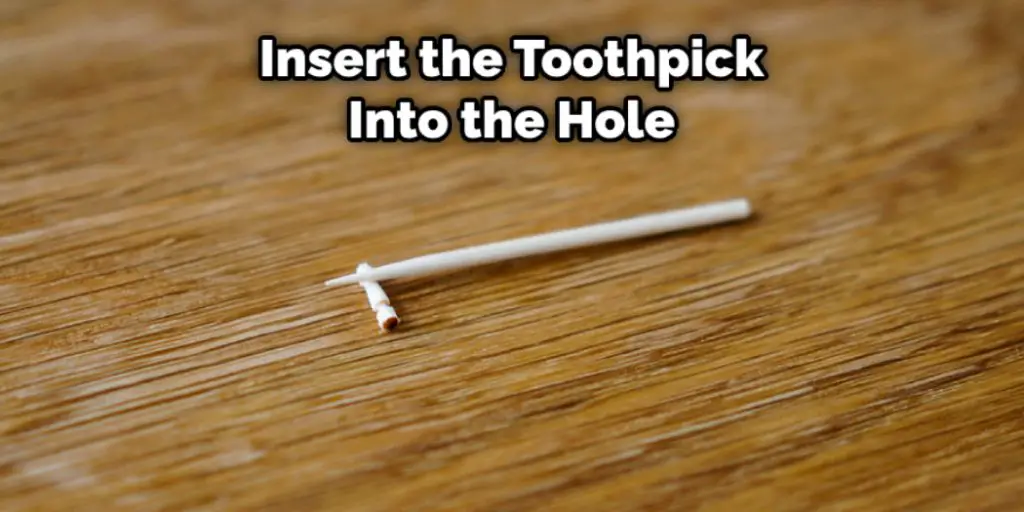
These are some simple and effective ways that you can use to fill a drilled hole in wood. Choose the method that best suits your needs and follow the instructions carefully. Then, with a little effort, you’ll be able to fill that hole and get your woodworking project looking great again in no time!
You Can Check It Out To Make Wood Super Slippery
Tips You Need to Maintain Before Filling a Drilled Hole in Wood
- Use the right drill bit for the job
- Keep the drill bit sharp
- Drill slowly and evenly
- Drill at a 90-degree angle
- Don’t force the drill
- Use a hand saw to make large holes
- Make a pilot hole before drilling
- Use a dowel to fill small holes
- Use wood glue and sawdust to fill medium-sized holes
- Use epoxy for large holes
- Be sure to sand and seal the filled hole
Following these simple tips, you can quickly and safely fill any drilled hole in wood.
How Big of a Hole Can You Fill With Wood Filler?
Most wood fillers come in two-ounce tubes, just enough to fill a one-inch diameter hole. If you need to fill a more significant gap, you can use a putty knife to apply the filler.
For small holes, such as those made by nails or screws, you can use toothpicks or matchsticks to fill the gaps. Just break the toothpicks or matchsticks in half and insert them into the hole. Then, use wood glue to attach the broken pieces.
If you’re filling a large hole, such as one made by a doorknob, you’ll need first to insert a piece of dowel into the hole. Then, use wood glue to attach the dowel to the surrounding wood. Once the glue has dried, you can fill the gap with wood filler.
Conclusion
When you need to fill a drilled hole in wood, you can use a few different methods. Although it is possible to fill a drilled hole in the wood with regular wood filler, using epoxy will create a more robust and longer-lasting repair.
So, if you have a drilled hole that needs repairing, give the epoxy a try – your finished project will look better than ever. If you read how to fill a drilled hole in wood and still have questions, please let us know in the comments below, and we’ll be happy to help.
